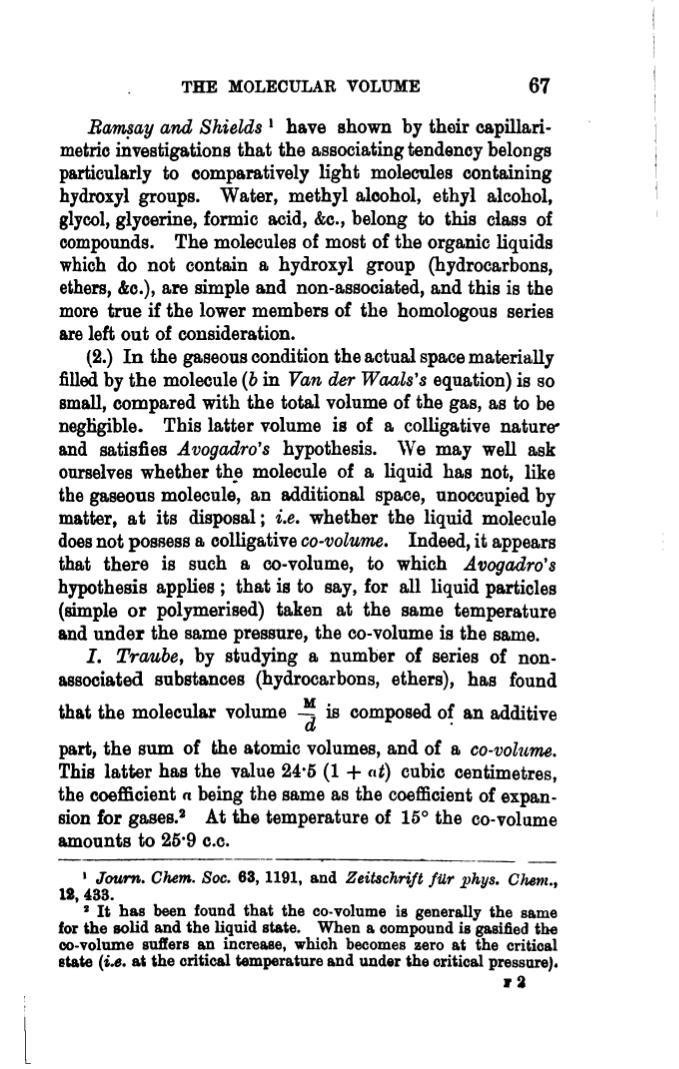Ramsay and Shields l have shown by their capillari- metric investigations that the associating tendency belongs particularly to comparatively light molecules containing hydroxyl groups. Water, methyl alcohol, ethyl alcohol, glycol, glycerine, formic acid, &c., belong to this class of compounds. The molecules of most of the organic liquids which do not contain a hydroxyl group (hydrocarbons, ethers, &c.), are simple and non-associated, and this is the more true if the lower members of the homologous series are left out of consideration.
(2.) In the gaseous condition the actual space materially filled by the molecule (b in Van der Wools' s equation) is so small, compared with the total volume of the gas, as to be negligible. This latter volume is of a colligative nature* and satisfies Avogadro's hypothesis. We may well ask ourselves whether the molecule of a liquid has not, like the gaseous molecule, an additional space, unoccupied by matter, at its disposal; i.e. whether the liquid molecule does not possess a colligative co-volume. Indeed, it appears that there is such a co-volume, to which Avogadro's hypothesis applies ; that is to say, for all liquid particles (simple or polymerised) taken at the same temperature and under the same pressure, the co-volume is the same.
I. Traube, by studying a number of series of non- associated substances (hydrocarbons, ethers), has found
that the molecular volume -, is composed of an additive
d
part, the sum of the atomic volumes, and of a co-volume. This latter has the value 24*5 (1 + at) cubic centimetres, the coefficient « being the same as the coefficient of expan- sion for gases. 2 At the temperature of 15° the co-volume amounts to 25*9 c.c.
1 Journ. Chem. Soc. 63, 1191, and Zeitschrift für phys. Chem., 12, 433.
2 It has been found that the co-volume is generally the same for the solid and the liquid state. When a compound is gasified the co-volume suffers an increase, which becomes zero at the critical state (i.e. at the critical temperature and under the critical pressure).
